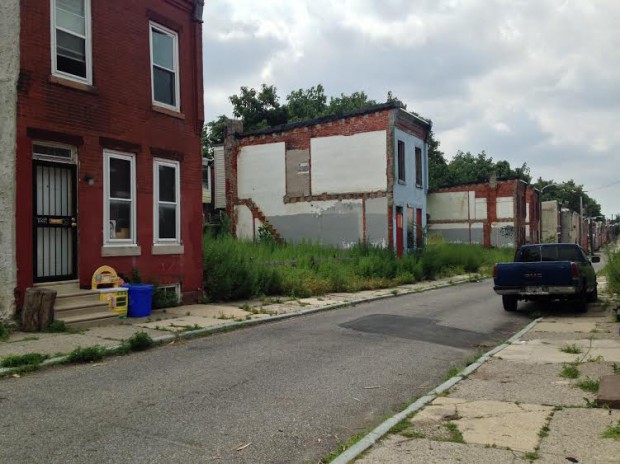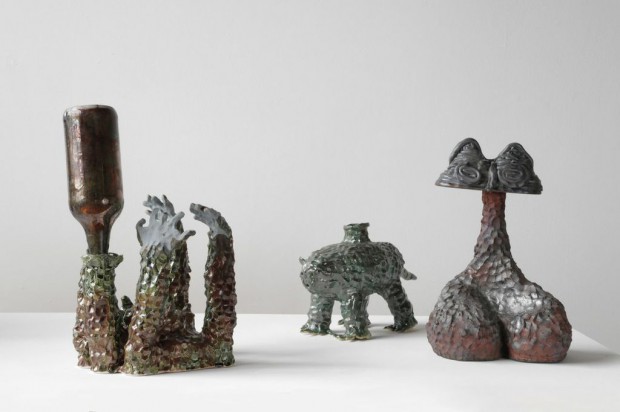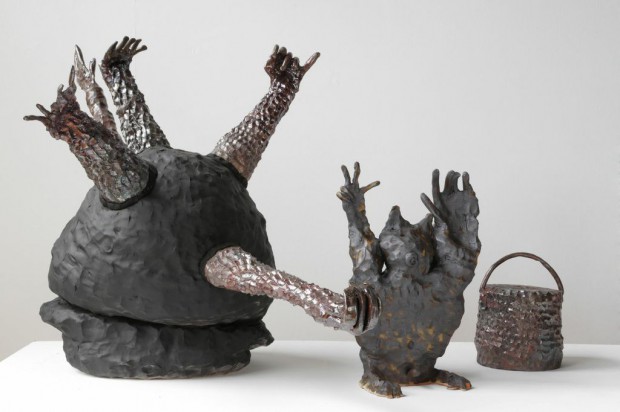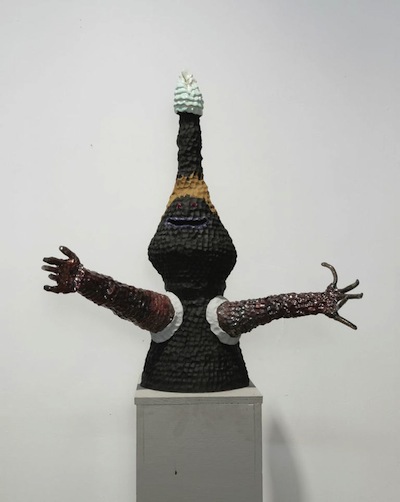Over the next few months, I’ll be traveling back and forth from Philadelphia to New York for a curatorial fellowship. Each week, I’ll be reporting back on my findings at Art F City.
Compared to the brutal squeeze on living space, and the professional rat race of New York, almost every other city starts to feel like the Promised Land. But time feels especially abundant down in Philadelphia’s Brewerytown, where two artist friends Sean Gerstley and Armando Veve live; from their garden roof deck, you can hear chickens and see urban horsemen roaming the empty lots between abandoned row houses, with lots of room for sky and and breeze. (By comparison, see the Brooklyn Grange, a rooftop market on Northern Boulevard, on one of the city’s busiest streets). In Philly, space is no longer a shrinking, finite stock of square footage, but it can be continuously added in vast brick cubes.
Mine is an art worlder’s and outsider’s experience, obviously. Google “Brewerytown”, and you’ll find a story familiar to artist-inhabited post-industrial neighborhoods: schools in crisis, violent crime, and steady gentrification efforts. But for artists with no kids, that’s mostly beside the point; neighborhoods are mainly rated by how much space you can get for cheap. About once a year, this compels my own frantic text messages to my friends, announcing that next year will finally be the year I head down. “We get texts like that all the time,” my friends told me later. Most of those texters (late 20s New York artists) have yet to follow up, which probably says something about the powerful pull of the New York-based art press and slavish addiction to market visibility.
All this was floating around in the front of my mind when I visited my friend Sean Gerstley’s studio this past weekend. A ceramicist who obsessively hones his craft, Sean has a large studio in an old factory building that’s been retrofitted with a full woodshop, sand blasting and spray rooms, kilns, and a large gallery space just for photographing artwork. He pays about as much for all that as I do for a 10 ft. x 5 ft. storage unit in Brooklyn.
The space and freedom comes through in Sean’s new series of raku-fired ceramic raccoons: childlike, crazy monsters that seem to be half-artists, half-animal. Their arms stretch out at all angles, maybe for hugs, maybe for cheers, or maybe just testing the limits of their own reach. One sucks on a pacifier with a little penis stuck out innocently in front of his body. Like craftsmen, their hands are expressive, and a manic desire to touch is emphasized through fingerprints all over their bodies. There’s even a naive quality about the rainbow raku glaze, which Sean chose in part because of its crafty associations. “People look down on it in the ceramic world,” he told me. “You tend to see it a lot in continuing ed programs.” They’re a little bit rougher around the edges than lamps he’s been making recently with Katie Stout.
A personal favorite, “Selfie,” is just four arms reaching up to the sky, with a bottle stuck neck-down in a narrow horn. Such is the self-destructive nature of creative need. “I wanted to make something that was more reflective of my time in Philly,” Sean said. He placed a small ceramic paint can—“for my painter friends”—next to a trio of alien-like misfits, who he’d jokingly grouped together as a sort of mismatched family. They’re like all the bands of artists I know.
Like its artists who thrive in old and dilapidated neighborhoods, Sean told me that Philadelphia also attracts a growing raccoon population. Recent reports show that raccoons are taking the city by storm; it’s not unusual to see photos of packs attacking people, nesting in abandoned houses, and gangs taking over a whole block. To some, they’re rabid terrorists who must be removed; for others they’re harmless populations who deserve to be here as much as the next person. “All those abandoned houses have a family living in it,” Sean reflected. He just said it like they’re the neighbors.







Comments on this entry are closed.